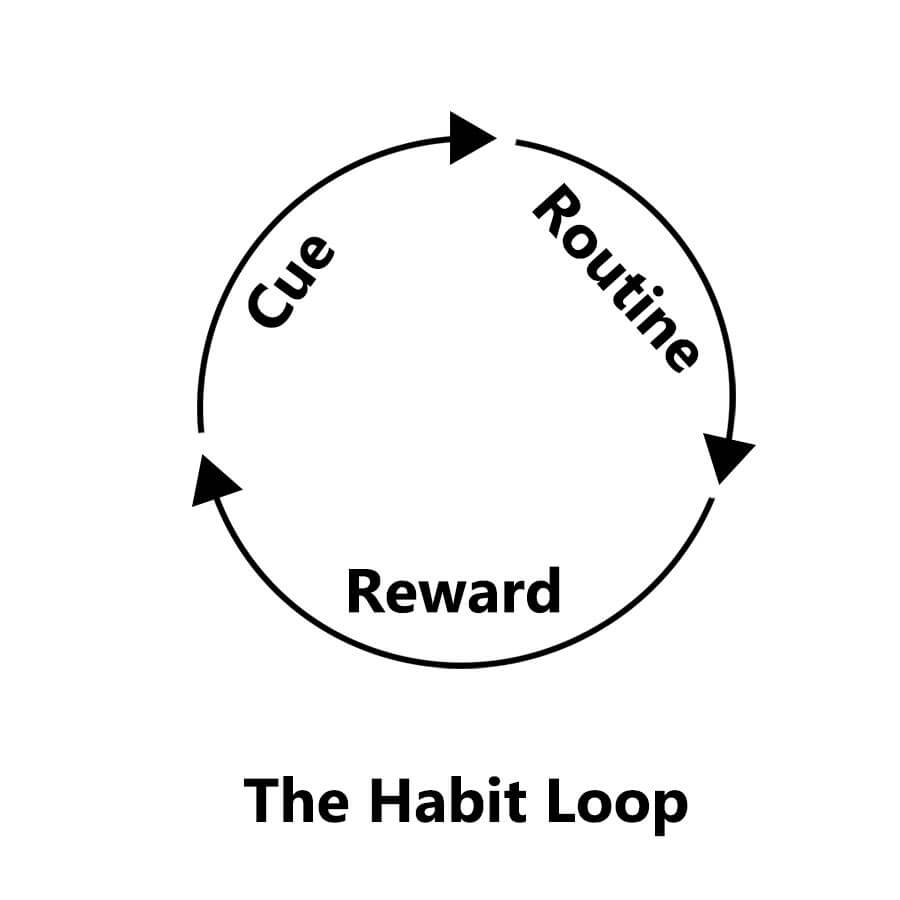I’ve been writing articles here at College Info Geek now for over a year (say what?). When you write enough articles for the same site, you begin to notice themes in your writing.
One of the recurring themes in my writing, I recently realized, is the importance of taking breaks. Any time I talk about how to write essays or really anything related to studying, I always mention the importance of stepping away from your work regularly.
Come to think of it, taking breaks is a frequent theme in Thomas’s videos as well. For instance, his video on dealing with student burnout mentions the importance of resting your brain as a way to combat and recover from an overloaded schedule.
Since taking breaks is such an important topic here at College Info Geek (whether we consciously knew it or not), we decided the topic was worthy of its own post. No matter what your major, I guarantee you could stand to take a break from work more often.
So come along as I explore why taking breaks is so important (as well as how you can start adding more into your schedule today).
As a bonus, this post might even save your life (seriously!).

Want to listen to an audio narration of this article? Just click play below:
Additionally, you’ll find this narration included in the College Info Geek Podcast feed. If you haven’t already, you may want to subscribe!
The Benefits of Taking Breaks
“It does good also to take walks out of doors, that our spirits may be raised and refreshed by the open air and fresh breeze…”
– Seneca, Dialogues
Breaks are awesome. They may seem like nothing exciting, just the “in-between” periods where not much is happening, but they’re actually amazing.
This amazingness comes from the benefits breaks bestow. Broadly speaking, these benefits fall into two categories: physical and creative.
Let’s explore each in detail.
Physical Benefits

You are not a robot. I know it may be a disappointment, and perhaps one day soon we’ll all be tireless superhuman cyborgs, but until the singularity dawns, we’re limited by the dictates of our biology.
Our biology did not evolve to sit at a desk typing all day.
As Yuval Noah Harari puts it in Sapiens: A Brief History of Humankind:
“Thirty thousand years ago, a…forager might leave camp with her companions at, say, eight in the morning. They’d roam the nearby forests and meadows, gathering mushrooms, digging up edible roots, catching frogs and occasionally running away from tigers. By early afternoon, they were back at the camp to make lunch. That left them plenty of time to gossip, tell stories, play with the children and just hang out” (50).
This is the life we evolved to live, even if the way we live now is a far cry. The salient point from the above quote is that people were meant to move. Sitting in one spot staring at a glowing screen is not moving. And no, typing doesn’t count.
So what are we supposed to do? I can’t responsibly tell you to drop out of college and go roam the forests (seriously, this is how Sasquatch legends get started). It doesn’t have to be anything that dramatic. All you need to do is take more breaks. Your body will thank you.
If you need any more justification, sitting down constantly isn’t just unnatural – it can even be deadly, as inactivity researcher (yes, that’s a real field of research) Marc Hamilton explained in a New York Times Magazine interview:
“This is your body on chairs: Electrical activity in the muscles drops — ‘the muscles go as silent as those of a dead horse,’ Hamilton says — leading to a cascade of harmful metabolic effects. Your calorie-burning rate immediately plunges to about one per minute, a third of what it would be if you got up and walked. Insulin effectiveness drops within a single day, and the risk of developing Type 2 diabetes rises. So does the risk of being obese.”
Obviously, it’s a vast oversimplification to say that constantly sitting will shorten your life in and of itself. Life expectancy is a complex thing that we still don’t fully understand, but the case against constantly sitting is strong.
So, in consequence, is the case for standing up and taking a break.
Creative Benefits

The benefits of taking regular breaks aren’t just physical, though. Taking regular breaks is also crucial for peak creativity.
Now, you may be thinking, “Studying isn’t creative. It’s just memorizing stuff so I can regurgitate it back on the final exam.”
If that’s how approach studying, you’re doing it wrong, and you’re also neglecting the many “study” activities that are in fact creative. Any time you write an essay, that’s a creative act. Type up a lab report? Creative act. Come up with an elegant solution to a mathematical proof? Creative again.
Even if you think your major isn’t a creative one, creative thinking is one of the keys to high performance. If you want an A, you need to be doing exceptional work. Exceptional work comes through a strong work ethic mixed with maximum creativity.
Anyway, how exactly does taking breaks boost your creativity? Once again, it goes back to human biology. As Nat Eliason discusses in his article on how he organizes his days, our mental alertness tends to ebb and flow in 90-minute cycles.
Pushing past 90 minutes, in other words (as well as working too much in general), is harmful to the quality of your creative output. Incidentally, this is also another reason why it’s best to break large writing assignments and other projects over several days – your ability to apply creative thinking to the project improves.
Now that we’ve established a strong case for the importance of taking regular breaks, let’s dig a little deeper into what that looks like on a day to day (and year to year) basis.
The Two Types of Breaks

To me, there are two broad categories of breaks you can take from work: Macro Breaks and Micro Breaks. What do these terms mean? I’ll cover each in turn.
Macro Breaks – These are the sort of breaks we’re most familiar with. Short, frequent examples include things like the weekend and public holidays. Longer, less frequent examples are things like summer vacation or winter break. Macro breaks provide an important mental “reset.”
This type of break allows you to do something besides work, refreshing your mind and rejuvenating your creativity (and maybe even letting you catch up on some sleep). I won’t say much more about these, except that you should try to keep the separation between them and work as strong as possible. Otherwise, you’re missing out on the benefits.
Micro Breaks – Less familiar (and, I’ll argue, less well-understood) are the micro breaks. These range from taking a five-minute break every 25 minutes while working (a la the Pomodoro technique and its many variants) to breaking your workday into multiple chunks of several hours with longer breaks in between. The siesta that is traditional in many countries around the world is a prime example of one of these longer (but still micro) breaks.
Personally, I think we suck at micro breaks. We don’t take enough of them, and when we do take them, we spend them doing things that are unhelpful or even detrimental.
How many times has the following happened to you?
8 pm: “I’ve been studying really hard today. I’ll just take a five minute break to check Facebook, Snapchat, and Twitter…”
8:15 pm: “Oh, look at how the time flies. Just one more BuzzFeed article…”
10 pm: “Well shit. I still have 5 pages to write. Oh well, at least I’m up on the latest Kardashian gossip.”
CHECKING SOCIAL MEDIA IS NOT TAKING A BREAK!!! You’re just wasting time and eroding your ability to focus even further, not to mention teetering on the brink of the vacuous wormhole that is most of the Internet.
When I talk about a “break”, here’s what I mean:
A 5-10 minute stretch away from screens and keyboards that gets your body moving and resets your focus (bonus points if it involves going outside).
Notice that this definition is still pretty vague. It’s purposefully so. It doesn’t matter too much what you do, so long as it fits the above definition. If you’re still not sure what you should do, stick around to the end of the article for some practical tips.
Common Excuses for Not Taking Breaks

Before I get to the tactical side of taking breaks, I want to address some common excuses for not taking regular breaks from work. Hopefully you’re already convinced that taking breaks is valuable, but in the moment it’s still easy to keep trudging through work because of the little lies we tell ourselves.
Don’t think I’m being high and mighty here: I’ve used all of these myself.
- “I don’t have enough time.” It’s easy to fall into this mental trap when you’re up against a deadline for an assignment. Our natural impulse is to “make every second count.” But as I discussed above, this thinking is out of line with our natural biological rhythms. Every second doesn’t count equally when our energy ebbs and flows. By taking the time for a break, you’re actually getting more time back in the long run, since the time you do spend working will have higher quality output.
- “Taking breaks disrupts my focus.” This is a legitimate concern. If you take breaks too frequently, then they can in fact disrupt your focus. A timer dinging every five minutes prevents you from getting into the all important “flow” state so essential to high quality work. You have to experiment to get the break interval right. Personally, I take five-minute breaks every thirty minutes over the course of 2-3 hour work sessions. But even that varies depending on how much energy I have, how much sleep I got the night before, and the kind of work I’m doing. Some tasks require more focus than others. I can easily focus on writing an article like this, but if I’m practicing my Spanish or working on my website, I find that the amount of time I can focus changes. I adjust the length of my breaks accordingly.
- “I read that [insert name of famous/influential/wealthy person] works all day without stopping. I have to do the same if I want to keep up.” First off, they probably don’t, at least not all the time. People’s accounts of themselves are notoriously inconsistent with reality. Especially if someone is being interviewed for a big publication, of course they want to make it look like they work hard. Second, just because they do it, doesn’t mean that doing it will make you as successful as they are. This is what’s known as the narrative fallacy. The best way to stand out is to do really good work, and the best way to do that is to work smarter, not harder. Running yourself into the ground will just burn you out.
Don’t let these excuses stand in your way. You’re smarter than that.
Practical Tips for Taking Breaks

Now that I’ve converted you to the break-taking camp, there are still a few details left to sort out. If you’re not in the habit of taking regular, proper breaks, it can take some practice to build the habit.
The following will help you remember to take breaks and extract the maximum value from them:
1. Do something physical. This could be something as simple as taking a walk or standing up and stretching. If you’ve listened to the CIG Podcast episode about how exercise improves your brain, however, you’ll know that simple movement isn’t enough: you need to get your heart rate elevated for peak mental performance.
That’s why on my breaks, I try to do something that gets the blood pumping. I alternate between jumping jacks (might want to avoid these if you live in a dorm with people below you), push-ups, bodyweight squats, and chair dips (only do this if your chair is sturdy).
2. Get a change of scene. Staying cooped up in the same room or hunched over at the same library table for hours can get oppressive. In addition to the above aerobic exercises, I like to use my breaks to take a short walk outside (weather permitting). The fresh air will clear your head, and the walk will help you work through any tricky parts of your assignment. You’ll be in great historical company, too.
3. Do something mentally stimulating. Famed physicist Richard Feynman played the bongos when he was stuck on a difficult problem. Sherlock Holmes played the violin when he was stuck on a difficult case. Both these examples testify to the value of mentally stimulating activities as a way of restoring our minds between work sessions.
For your own breaks, there are hundreds of possibilities. All that matters is that whatever you do is unrelated to your work. For me, it’s often something like messing around on the piano or practicing different kinds of knots. For you, it might be sketching, solving a Rubik’s cube, or doing a handstand. Just give your mind something else to do that also engages your body.
4. Use the right apps (but only if they help). All you need to remind yourself to take breaks is a clock and maybe a kitchen timer. But I’ve found that the right apps can be useful as well. I’ve tried a few different apps such as the Take A Break extension for Chrome and the EyeLeo desktop app for Windows.
These apps worked okay, but what’s really worked for me is the Stand Up! app (iPhone only at the moment). Stand Up! allows me to define how often I want to take breaks, what times/days of the week I want reminders, and even lets me receive reminders based on my location (so it doesn’t bug me while I’m in a meeting with a professor, for instance). I have it set to make the loudest, most obnoxious sound possible so that even if I have headphones on I can’t help but hear it.
You could also use a Pomodoro style app or website such as Pomotodo or Tomato Timer for the same purpose – just make sure to use the built-in breaks to get up and move around.
5. Make it a habit. Like anything you want to do regularly, you need to make taking regular breaks a habit. The ultimate purpose of any app or method you use is just to help turn taking breaks into something you do automatically.
As Charles Duhigg outlines in The Power of Habit, every habit has three parts: the cue, the routine, and the reward. These make up what Duhigg calls the “Habit Loop.” Forming or changing habits is just about manipulating these three parts.

In the case of taking a break, the cue is probably going to be some sort of timer going off. It could be a sound or just a window that pops up on your screen. In my case, finding the right cue turned out to be more important than I would have imagined. It wasn’t until I found an app with a sufficiently urgent cue that I started getting out of my chair when I got the notification. You should experiment with what kind of cue feels best for you.
The routine, in this case, is what much of the preceding two sections covered. It’s what you actually do as part of the habit. You don’t have to worry too much about this. Just make sure the routine isn’t something detrimental like visiting a distracting website or going to the fridge for an unhealthy snack.
The reward is a bit harder to quantify (which is one of the reasons this habit can be tricky to build). Theoretically, the reward is a higher overall quality of health and work, but day to day those are difficult things to notice.
This is why, particularly when you’re first building the habit, I recommend you do something fun on your break. Activities such as doing handstands or playing the violin while on your break thus take on an additional value: they make the break something to look forward to. If you know that you’re going to do something fun on your break, you’ll practically leap out of chair.
Again, just make sure you don’t use a destructive reward such as the shallow pleasure of eating junk food or reading celebrity gossip.
When you apply the principles of habit formation to taking regular breaks, you’re much more likely to turn it from something that would be nice to do someday to something that you do every day without even thinking.
Conclusion
Meditation may be the new superpower, but I think taking regular breaks deserves just as much attention. It’s a highly underrated part of optimal mental performance that can transform the way you work and study. My hope is that you’re now convinced of the awesomeness of breaks and that you’ll make them as much a part of your studying as coffee or your favorite playlist.
For some additional perspective on this topic, check out Thomas’s video on how to be lazy and still get a ton of work done.
Have any other questions about taking regular breaks? Share them in the comments below or discuss them in the community.
Want to get some accountability for building this habit? Head over to the College Info Geek Habitica Guild.

